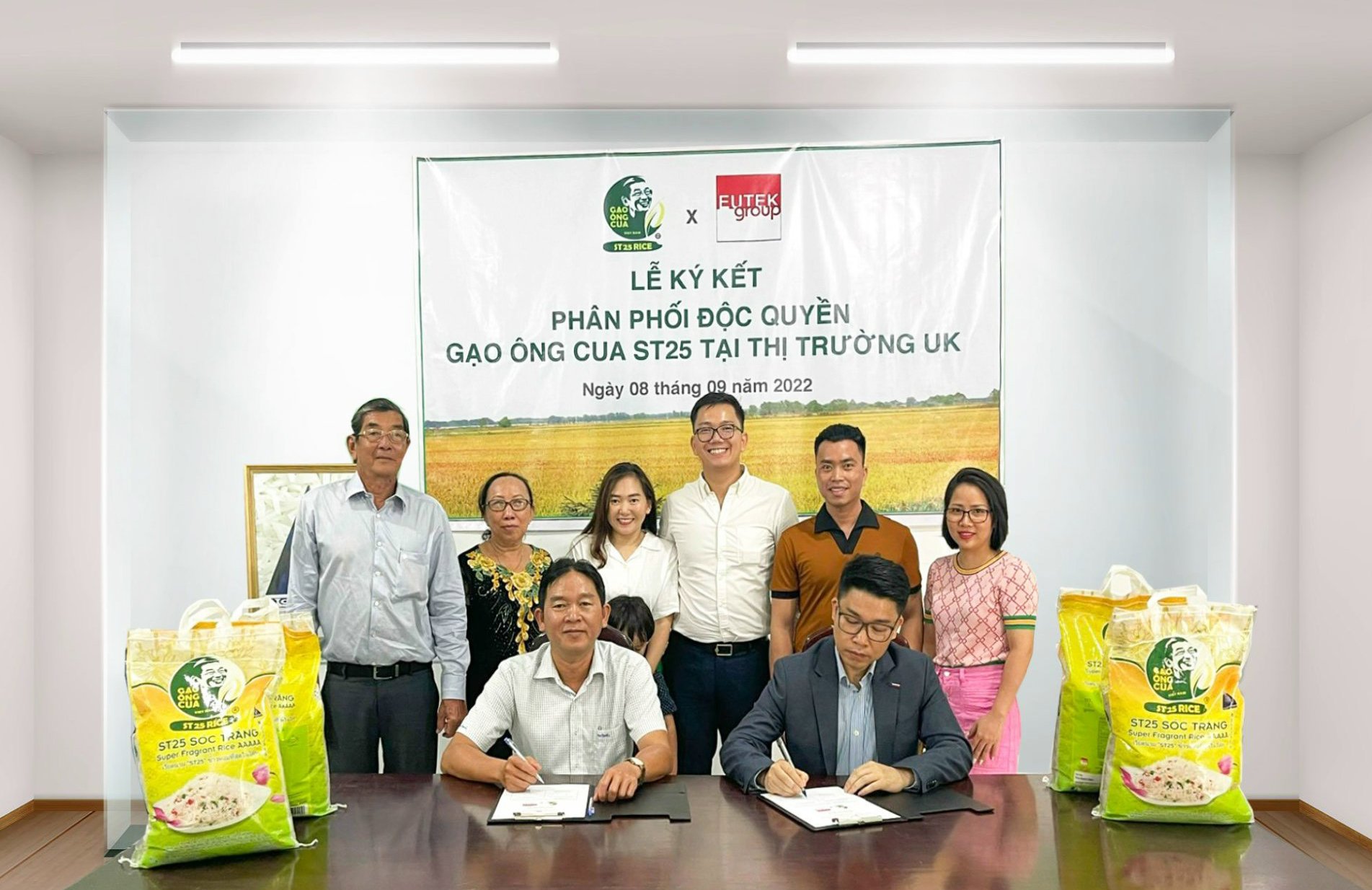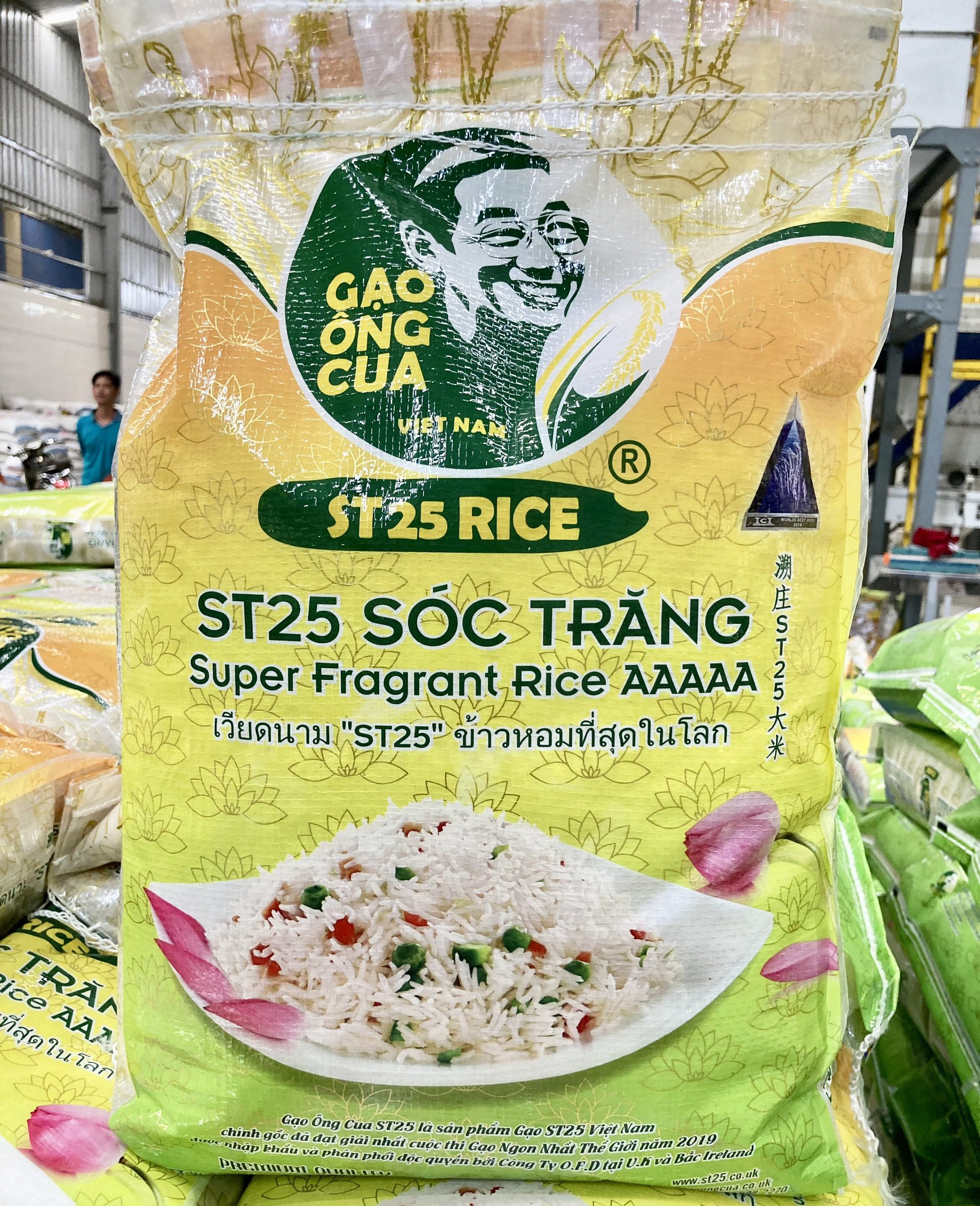November 26, 2025 | 06:06 GMT +7
November 26, 2025 | 06:06 GMT +7
Hotline: 0913.378.918
November 26, 2025 | 06:06 GMT +7
Hotline: 0913.378.918

Signing ceremony for the official export of "Ong Cua rice" products to the UK market. Photo: Huu Duc.
The global rice market has recently experienced significant fluctuations in production, export, and import, which has resulted in the increased value and brand recognition of Vietnamese high-quality rice.
Over the two months period between July 20 and late September 2023, rice prices in the global market have been on an upward trend. This surge was the direct result of India's announcement of a ban on the export of common rice varieties as the country's effort to ensure a sufficient domestic supply and curb price increases in the domestic market. The rice market has gradually stabilized over the first two weeks of September. However, certain Vietnamese premium rice varieties maintained stable high prices.
According to the Vietnam Food Association (VFA), current rice prices have decreased by approximately 22 to 30 USD per ton compared to that in late August. Various 5% broken rice products are priced between 613 and 617 USD per ton, whereas the 25% broken rice products fluctuate between 598 and 602 USD per ton.
A representative of a rice production and trading company from the Mekong Delta region, a major rice-producing area in Vietnam, noted that high-quality Vietnamese rice continues to maintain its price at over 800 USD per ton. Fragrant rice varieties such as ST24 and ST25 are currently dominating the market. Namely, these products are sold at wholesale prices ranging from 620 to 650 USD per ton. Many Vietnamese rice companies have successfully developed and expanded the market for premium bagged rice products in the domestic market over the last few years. Most notably, they offer convenient five-kilogram rice packages with attractive branding. Additionally, multiple rice businesses have invested in building premium rice brands, tackling counterfeit goods, and significantly enhancing their brand recognition in the domestic market since 2019. An example of this endeavor is the "Ong Cua Rice" brand belonging to HQT Company in Soc Trang, which has now been exported to the EU, Canada, and Australia.
However, the export volume of Vietnamese bagged rice remains relatively low, and these bagged products are primarily shipped by container. Domestically-consumed bagged rice products, especially those packaged in five-kilogram bags, feature appealing designs and labels but fall under a higher price range. As a result, exported bagged rice is often packaged in ten-kilogram bags to reduce production costs.

Packaging examples for various Ong Cua fragrant rice products. Photo: Huu Duc.
On the other hand, organic rice is often regarded as a premium, nutrition-focused market segment. Although organic rice consumption has grown significantly in the EU and the United States, the consumption rate is relatively limited, possibly due to the global economic recession and reduced income levels.
Mr. Huynh Tri Phuong, Director of Rice Shrimp Company in An Giang province, believes that investing in the development of organic products is a long-term strategy in exchange for immediate high returns. At present, organic rice products belong to a unique market segment, and investments in this segment involve risks and high certification costs. As a result, only a small number of companies invest in these products, with their primary focus on building brand awareness. In addition to organic rice products, several companies have chosen to approach the production of high-quality and safe rice to meet the demands of modern and long-lasting consumption trends.
In response to the recent substantial price fluctuations, Vietnamese rice businesses have seen a moderate increase in domestic rice prices, which average around 15 to 20%. This market trend aligns with market demand, as Vietnam enhances the quality of its rice by utlizing high-quality varieties. According to the Department of Crop Production, the structure of rice production for 2022-2023 winter-spring crop included fragrant and specialty rice, which represent over 21% of the total production. Most notably, high-quality rice varieties constituted the majority at over 58%.
In response to the current rising trend of consumer demand for high-quality rice, fragrant rice both domestically and internationally, the transfer and application of scientific research achievements in breeding rice varieties such as ST24 and ST25 are gaining momentum. Multiple rice businesses have partnered with farmers to invest in establishing raw material areas and diversifying products in various regions and areas.
Translated by Nguyen Hai Long
/2025/11/24/3536-2-112800_176.jpg)
(VAN) Dong Nai now has tens of thousands of hectares of forests certified for sustainable management, and this area will continue to be expanded in the coming period.

(VAN) Vinh Ha hamlet (Dai Xuyen commune, Hanoi) is shifting away from small-scale farming as households adopt bioscurity into their breeder chicken models.

(VAN) Heavy rains make aquatic species more vulnerable to disease. Proactive water management and high-tech systems help farmers prevent outbreaks and protect yields.

(VAN) Greenhouses are shifting production mindsets in Binh Lu commune, enabling farmers to ‘weather the sun and rain’ and secure stable vegetable harvests throughout the year.

(VAN) Green transition is crucial for the Mekong Delta amid climate change and stricter standards, offering a path toward sustainability.

(VAN) Dong Thap promotes agricultural restructuring, forms large specialized farming zones, raises the value of agricultural products and develops toward ecological and high-tech directions.
/2025/11/22/4018-4-213342_747.jpg)
(VAN) The Mekong Delta Agricultural Experts Club has attracted 143 experts and researchers to participate in providing consultancy and contributing initiatives to the development of one million hectares of high-quality rice.